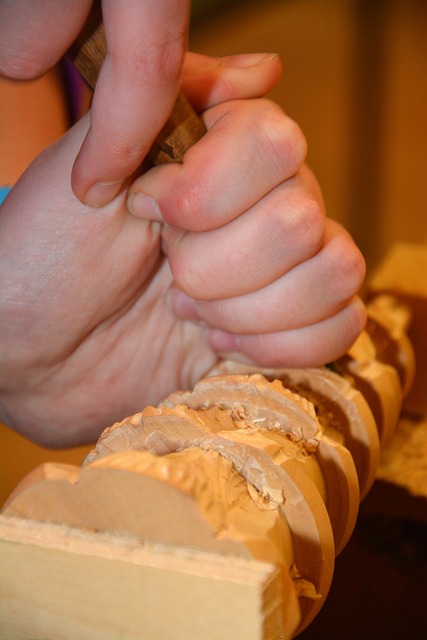In the field of wood finishing, carpenters have a variety of options to enhance and protect wood surfaces. Stains are chosen for their ability to subtly tint wood while maintaining its natural texture and beauty, available in translucent to semi-transparent shades. Varnishes provide a protective coating that ranges from matte to glossy finishes, guarding against moisture and wear, and are selected based on the project's requirements and environmental conditions. Paints offer complete coverage for bold colors or uniformity but alter the wood's appearance with their opaque nature. Each finish is carefully chosen by carpenters considering the wood type, aesthetic preferences, and necessary protection, ensuring the longevity and attractiveness of the finished piece.
Carpenters must possess a deep understanding of each finish to prepare surfaces correctly, select appropriate tools, and apply finishes evenly. They consider factors like wood characteristics, environmental influences, and the project's purpose when deciding between water-based or oil-based stains and varnishes. Water-based options are favored for their ease of use and low odor, while oil-based products provide a more saturated finish. Gel stains offer a uniform finish that fills in cracks, particularly beneficial for woods like oak or cherry. For protection, carpenters often turn to polyurethane varnishes, available in oil-based or water-based forms, with the latter being preferred for indoor applications due to reduced odor and faster drying times. When a subtle sheen is desired, shellac or lacquer can be applied to provide a warm, amber finish or a high-gloss protective coat, respectively. The choice of finish by a skilled carpenter ensures that the woodwork is both visually appealing and durable, with the final look and functionality being the key determinants of the finish selected.
Wood surfaces, whether they grace the floors of our homes or the fine details of our furniture, are integral to the aesthetic and durability of these items. Finishing them with stains, varnishes, or paints is an art that not only protects but also highlights their natural beauty. This article delves into the nuances of wood surface finishes, offering insights from preparation to application, and beyond. From understanding the role a skilled carpenter plays in applying the perfect finish, to exploring stain options that enhance natural wood characteristics, we guide you through selecting varnish types suitable for different projects, and determining when paint techniques are the best choice. With detailed steps on staining, comparisons of varnish options, and tips on ensuring a long-lasting finish, this piece is an invaluable resource for DIY enthusiasts and professionals alike. Learn how to maintain your wood finishes over time, troubleshoot common issues, and achieve that professional look with the right tools and safety equipment.
- Understanding Wood Surface Finishes
- The Role of a Skilled Carpenter in Applying Finishes
- Stain Options for Enhancing Natural Wood Characteristics
- Varnish Types and Their Suitability for Different Projects
Understanding Wood Surface Finishes

When it comes to preserving and enhancing the natural beauty of wood, carpenters have a variety of surface finishes at their disposal. Stains, varnishes, and paints each serve a distinct purpose in the process of finishing wood surfaces. Stains are primarily used to penetrate the wood grain, tinting it with color while allowing the natural characteristics of the wood to show through. They come in various shades, from translucent to semi-transparent, enabling carpenters to highlight the intrinsic details of the wood without covering them entirely. Varnishes, on the other hand, provide a protective layer that safeguards against moisture and wear, offering a more durable finish. They are available in different sheens, such as matte, satin, semi-gloss, or glossy, allowing for both aesthetic and functional customization.
Paints offer the most opaque coverage, effectively transforming the wood’s appearance by completely masking its natural color and texture. Unlike stains and varnishes, paint forms a barrier that not only protects the wood from environmental factors but can also be used to create bold colors or achieve a uniform look. The choice between these finishes depends on the desired outcome, the type of wood being finished, and the level of protection required. For instance, kitchen cabinets might benefit from a varnish for moisture resistance, while a handcrafted piece of furniture may be enhanced with a stain to preserve its artisanal look. Regardless of the finish selected, the skillful application by a carpenter is crucial in achieving a flawless and enduring wood surface that meets both functional and aesthetic standards. Understanding the properties and applications of each finish empowers carpenters to make informed decisions, ensuring that the wood surfaces they complete are both beautiful and resilient.
The Role of a Skilled Carpenter in Applying Finishes

When it comes to enhancing and protecting wood surfaces, the application of finishes such as stains, varnishes, or paints is a delicate process that requires both skill and precision. A skilled carpenter plays a pivotal role in this regard, as they bring a level of expertise that ensures each finish not only adheres properly but also brings out the natural beauty of the wood. The choice of finish can significantly affect the aesthetic and durability of the finished piece. For instance, stains can penetrate the wood to enhance its color without significantly altering it, while varnishes and paints provide a protective layer that safeguards against moisture, scratches, and UV rays. A carpenter’s knowledge of different finishes and their compatibility with various types of wood is crucial for achieving the desired outcome.
The art of applying these finishes is not merely about the application itself but also includes preparation and the understanding of the wood’s characteristics. A skilled carpenter will prepare the surface by sanding, cleaning, and possibly filling in gaps or imperfections. They understand that the quality of the finish is only as good as the substrate it adheres to. Moreover, they are adept at selecting the right tools and techniques for each type of finish, whether it’s a brush, roller, or spray gun, ensuring a smooth and even coat that highlights the wood’s grain and texture without compromising its integrity. Their attention to detail and commitment to craftsmanship ensures that every project, from a simple wooden table to an intricate piece of furniture, is finished with the utmost care and professionalism. This expertise not only enhances the visual appeal but also extends the life and functionality of the wood piece, making the work of a skilled carpenter indispensable in the realm of wood finishing.
Stain Options for Enhancing Natural Wood Characteristics

When enhancing natural wood characteristics, selecting the right stain is paramount for a carpenter to achieve the desired aesthetic while preserving the wood’s inherent beauty. Wood stains come in a variety of hues and can penetrate into the wood grain, subtly highlighting its patterns and texture. Water-based stains are popular among professionals for their ease of application, minimal odor, and quick drying time. They offer a range of colors that can be adjusted to bring out the natural tones of the wood. Oil-based stains, on the other hand, provide a deeper saturation and longer-lasting finish but require more preparation due to their slower drying process and stronger odor.
For those looking to enhance the natural characteristics of the wood without significantly altering its appearance, gel stains are an excellent option. These stains have a thicker consistency, which allows them to lie flat on the wood surface, filling in the cracks and providing even color distribution. They are particularly well-suited for woods with rich grain patterns, such as oak or cherry, where the goal is to subtly enhance the natural beauty of the material without obscuring it. The choice between these stain options depends on the desired outcome, the type of wood being worked on, and the carpenter’s expertise in applying the product correctly. Proper surface preparation, including sanding and cleaning, is crucial before staining to ensure a uniform and long-lasting finish.
Varnish Types and Their Suitability for Different Projects

When a carpenter selects a varnish for wood surfaces, they must consider the type of wood, the desired aesthetic, and the environmental conditions where the finished piece will reside. Among the myriad varnish types available, oil-based polyurethane varnishes offer exceptional durability and resistance to abrasion and moisture, making them ideal for high-traffic areas or exterior projects where longevity is paramount. These varnishes are particularly well-suited for carpenter work that will face the elements or see heavy use over time. On the other hand, water-based polyurethane varnishes provide a more environmentally friendly option with reduced odor and quicker drying times. They are an excellent choice for indoor projects, such as kitchen cabinets or furniture in homes, where a balance of durability and ease of application is desired.
For projects that require a satin or glossy sheen without the robustness of polyurethane, carpenter’s have alternative varnish options like shellac or lacquer. Shellac provides a beautiful, amber-toned finish that is often used for antique restoration or to impart a subtle luster to fine woodwork. Lacquer, with its fast drying properties and high shine, is ideal for musical instruments or any piece where a transparent, protective coat is needed without significant modification to the wood’s natural color and texture. Ultimately, the choice of varnish depends on the specific needs of the project and the carpenter’s expertise in applying each type effectively to achieve the desired outcome.
When it comes to preserving and enhancing the beauty of wood surfaces, the choice of finish is paramount. This article has delved into the intricacies of wood surface finishes, from stains that accentuate natural grain patterns to varnishes tailored for various projects. A skilled carpenter plays an integral role in applying these finishes expertly, ensuring a durable and aesthetically pleasing result. Whether you’re refurbishing a cherished piece of furniture or starting a new woodworking project, understanding the options available is key to achieving the desired outcome. By carefully considering the type of wood, its intended use, and the desired final appearance, homeowners and professionals alike can make informed decisions that will protect their wood investments and elevate their aesthetic appeal.



